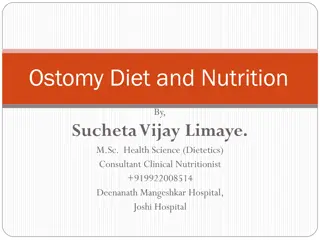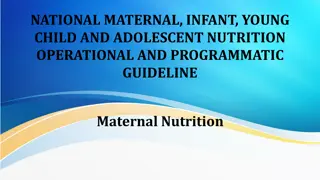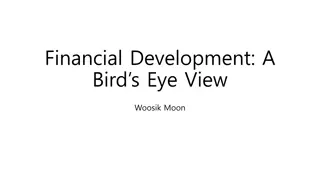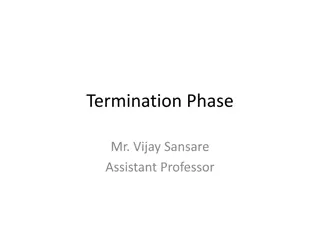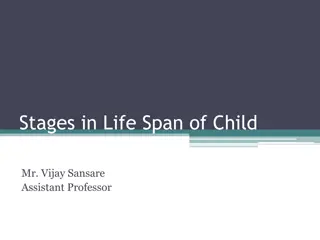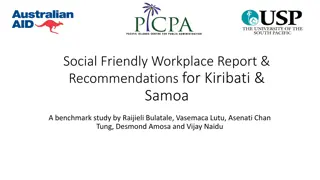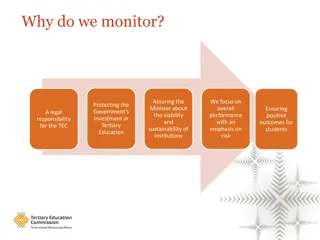
Women's Health and Economic Impact on Children's Nutritional Status
Explore the correlation between women's health, economic condition, and children's nutritional status through a comprehensive analysis. The study delves into malnutrition types, prevalence, economic implications, and intergenerational transmission. It also examines various indices and literature reviews highlighting key factors influencing children's nutritional well-being in different regions of India.
Download Presentation

Please find below an Image/Link to download the presentation.
The content on the website is provided AS IS for your information and personal use only. It may not be sold, licensed, or shared on other websites without obtaining consent from the author. If you encounter any issues during the download, it is possible that the publisher has removed the file from their server.
You are allowed to download the files provided on this website for personal or commercial use, subject to the condition that they are used lawfully. All files are the property of their respective owners.
The content on the website is provided AS IS for your information and personal use only. It may not be sold, licensed, or shared on other websites without obtaining consent from the author.
E N D
Presentation Transcript
Impact of Women's Health and Economic Condition on Children Nutritional Status: A Correlation Analysis 1 Urvisha J. Mataliya Dr. Vijay S. Jariwala
Introduction 2 What is malnutrition? Types of malnutrition Prevalence of malnutrition Economic growth vs Nutritional status of India Intergenerational transmission of malnutrition
Construction of three indices 3 WCI Institutional birth DNI HCI Stunted Electricity Antenatal care Wasted Drinking water Mother who had at least 10 years or more year Severely wasted Sanitation of schooling Underweight Clean fuel Mother who had married before the age of 18 Overweight years
Literature review 4 (Matariya et al., 2017)They highlighted the importance of environmental factors on nutritional status of the child. The results of the logistic regression indicate that male have 1.6 times higher odds of being undernourished as compared to females. Children who are older than 5 years and children who drink unfiltered water have 2.2 times higher odds of being undernourished. Those children whose mothers have unsanitary hands and clothes have 1.8 times higher odds of being undernourished. Children whose mothers and heads of household have less than a secondary level of education have 2.8 and 8.4 times higher odds of being undernourished respectively. Results also showed that those children who have fall into the fair and poor category for Elizabeth s micro environmental scale had 2.05 and 2.41 times higher odds of being undernourished as compared to those children who are classified into good category. Briscoe s scale for sanitation had not found any statistically significant result.
(Waghela et al., 2022) Objective of this study is to find out the prevalence of malnutrition and factors associated with it in the Vadodara district of Gujarat. Chi square test was used to compare the association between the malnutrition and factors associated with it. Results showed that 70.78 % of children suffered from any one or more forms of malnutrition. In the findings not any single independent variable is found statistically significant but researchers conclude that educational qualification of mother was strongly affected to the nutritional status of children. Apart from that, exclusive breast feeding, pre- lacteal feed, complementary feeding are the independent variable that are affected to the nutritional status of children. (Gupta et al., 2022) Researcher identified the risk factors of severe acute malnutrition among the under five children from urban Surat, Gujarat. Study was carried out between August to September 2019. All the children registered at the anganwadi center of the west zone of Surat are included in the study. Data collection was done through questionnaires. WHO Anthro software was used to analyse the anthropometric data. Odds ratio was used to estimate the risk factor or malnutrition. Result showed that out of 584 children, 26.2 % children are suffered from under nutrition and 8.7 % children are severely acute malnourished. If we consider potential risk factor of malnutrition, results showed low birth weight (OR = 4.85), practises of bottle feeding (OR= 5.41), history of poor appetite (OR = 2.89), and children belonging to joint family had 3.84 times higher odds as compared to those children who belonged to nuclear family at significant level. 5
Objectives 6 To examine the nutritional status of children across all districts of Gujarat for NFHS-5 data To examine the health status of women and the socio-economic conditions of households across all districts of Gujarat for NFHS-5 data To assess the rank correlation between the Children District Nutritional Index (CDNI) rank with the Women Condition Index (WCI) rank and the Household Condition Index (HCI) rank
Methodology 7 Construction of three indices For getting normalised value used following formula 1) For positive indicator = (Xi Mini) / (Maxi Mini) 2) For Negative indicators = (Maxi Mini) / (Maxi Mini) District Nutritional Index Example (Ahmadabad) =Sum (stunted, wasted, severely wasted, underweight, overweight) *1/5 (1) = Sum (0.53+0.99+0.86+0.69+0.45) *1/5 = (3.52) * 1/5 = 0.70
8 Household Condition Index Example (Ahmadabad) =Sum (Electricity, Drinking water, Sanitation, Clean fuel) *1/4 . (2) = Sum (0.96+0.89+1+1) = (3.85) *1/4 = 0.96 Women Condition Index Example (Ahmadabad) =Sum (Antenatal care, Marriage, Education, Institutional birth) *1/4 ..(3) = Sum (0.84 + 0.75 + 0.56 + 0.78) * 1/4 = (2.93) * 1/4 = 0. 73
9 To check the correlation between DNI and HCI and DNI with WCI Spearman rank correlation is utilised using IBM SPSS statistics version 25 For graphical presentation of the district-level disparities in terms of DNI, HCI, and WCI paintmaps website is used
Results 10 Name of the districts which secured top five rank in DNI, HCI and WCI Sr. No DNI HCI WCI 1 Junagadh Ahmadabad, Rajkot Navsari 2 Valsad Jamnagar Rajkot 3 Ahmadabad Surat Surat 4 Jamnagar Vadodara Porbandar 5 Bhavnagar Gandhinagar Valsad Source Authors own calculations
Name of the districts which obtained bottom five rank in DNI, HCI and WCI 11 Sr. No DNI HCI WCI 1 Panchmahal Dahod Banaskantha 2 Dahod, Dang Banaskantha Kheda 3 Tapi Panchmahal Surendra Nagar 4 Chhota Udaipur Dang Dang 5 Sabarkantha Narmada Narmada Source Authors own calculations
District level disparities in terms of children nutritional status 14
District level disparities in term of household condition 15
District level disparities in terms of women health status 16
References 17 Gupta, V., Munshi, R., Natt, H. K., & Garg, A. (2022). Prevalence and Risk Factors for Severe Acute Malnutrition among Less Than Five Children from an Urban Locality of Surat City, Western India. National Journal of Community Medicine, 13(3), 158 162. https://doi.org/10.55489/njcm.1332022392 Matariya, Z. R., Lodhiya, K. K., & Mahajan, R. G. (2017). Environmental correlates of undernutrition among children of 3 6 years of age , Rajkot , Gujarat , India. Journal of Family Medicine and Primary Care, 5(4), 834 839. https://doi.org/10.4103/2249-4863.201152 Ministry of Health and Family Welfare. (2020). National Family Health Survey-5 (NFHS-5). In International Institute for Population Sciences. chrome- extension://efaidnbmnnnibpcajpcglclefindmkaj/https://main.mohfw.gov.in/sites/default/files/NFHS-5_Phase-II_0.pdf Singh, A., Nadda, A., Rochwani, R., Singh, P., Khan, Z., & D, G. (2016). Study of knowledge and skills of anganwadi workers regarding breastfeeding and infant and young child feeding practices. Health, 6(3), 515 520. International Journal of Medical Science and Public https://doi.org/10.5455/ijmsph.2017.0954620092016 Tigga, P. L., Sen, J., & Mondal, N. (2015). Association of some socio-economic and socio-demographic variables with wasting among pre-school children of North Bengal, India. Ethiopian Journal of Health Sciences, 25(1), 63 72. https://doi.org/10.4314/ejhs.v25i1.9 Umallawala, T., Puwar, T., Pandya, A., Bhavsar, P., Patil, M. S., & Saha, S. (2022). Sociocultural Determinants of Nutritional Status Among Children Under Five Years of Age: An Ethnographic Study From Gujarat. Cureus, 14(7), 1 10. https://doi.org/10.7759/cureus.27377 Waghela, D., Nagar, S., & Ravi, R. P. (2022). Malnutrition among Under Five Children in Peri-Tribal areas: A study on Prevalence and Factors associated in Vadodara District of Gujarat State in India. Online Journal of Health and Allied Sciences, 21(1), 1 4. https://www.ojhas.org/issue81/2022-1-1.html
18 Thank you







